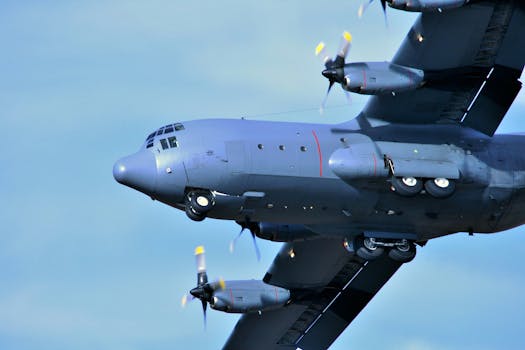
The global defense technology market is booming, fueled by geopolitical instability, technological advancements, and increasing defense budgets worldwide. This presents lucrative opportunities for investors, but the sector is notoriously risky and complex. Navigating this landscape requires careful consideration and a willingness to learn from past mistakes. This article explores three hard-earned lessons for investors looking to capitalize on the burgeoning defense tech industry. We'll delve into topics like military AI, cybersecurity in defense, defense spending forecasts, and emerging defense technologies.
Lesson 1: Don't Underestimate the Regulatory Landscape
The defense industry is heavily regulated, with complex procurement processes, stringent export controls, and extensive compliance requirements. This creates significant barriers to entry and can significantly impact investment timelines and profitability. Ignoring these regulations can lead to costly delays, legal challenges, and even project failures.
Understanding the intricacies of defense procurement
Navigating the labyrinthine world of government contracts and procurement processes is crucial. These processes often involve lengthy bidding cycles, multiple layers of review, and rigorous performance standards. Investors need to understand the specific regulations governing their target market, including:
- ITAR (International Traffic in Arms Regulations): These regulations govern the export and import of defense-related articles and services. Non-compliance can result in severe penalties.
- EAR (Export Administration Regulations): These regulations control the export of dual-use technologies, which have both commercial and military applications.
- CFIUS (Committee on Foreign Investment in the United States): This interagency committee reviews foreign investments in US businesses to ensure they don't pose a national security risk.
Ignoring these regulations can lead to significant delays and financial losses. Investors should prioritize due diligence and engage experienced legal counsel specializing in defense industry regulations.
The impact of geopolitical shifts on defense spending
Geopolitical instability significantly influences defense spending. Rising tensions between nations often lead to increased military budgets, creating opportunities for defense technology companies. However, these shifts can be unpredictable, making accurate forecasting challenging. For example, unexpected changes in international relations can lead to budget cuts or shifts in priorities, impacting the viability of specific defense projects. Investors must carefully analyze geopolitical trends and their potential impact on defense spending.
Lesson 2: Technology is Only Half the Battle; Focus on Integration and Implementation
While groundbreaking technologies are crucial, successful defense contracts often hinge on successful integration and implementation. A cutting-edge technology might be useless if it's incompatible with existing systems or if it lacks adequate training and support for end-users (military personnel).
The challenges of integrating new technologies into existing military systems
Integrating new technologies into established military systems is a complex and often protracted process. It requires careful consideration of interoperability, cybersecurity, and data management. Companies that excel at system integration and offer comprehensive support packages are often more successful in securing contracts.
- Interoperability: New systems must seamlessly integrate with existing hardware and software. Lack of interoperability can lead to system failures and operational inefficiencies.
- Cybersecurity: Defense systems are prime targets for cyberattacks. Robust cybersecurity measures are essential to protect sensitive data and prevent system disruptions.
- Training and Support: Effective training programs are essential to ensure that military personnel can operate new technologies effectively.
Prioritizing lifecycle management for long-term success
Defense systems typically have long lifecycles, requiring ongoing maintenance, upgrades, and support. Companies that offer comprehensive lifecycle management solutions often have a competitive advantage. This includes providing spare parts, software updates, and technical support throughout the system's operational life. Investors should assess companies’ capabilities in this area.
Lesson 3: Don't Neglect the Human Factor: Talent Acquisition and Retention
The defense technology sector is highly competitive, and attracting and retaining top talent is crucial for success. Companies with a strong reputation for innovation, employee development, and a positive work environment are better positioned to attract and retain skilled engineers, scientists, and other professionals. This factor is often underestimated but can significantly influence a company's long-term competitiveness and profitability.
The importance of a skilled workforce in defense tech
The defense industry demands highly specialized skills in areas like artificial intelligence, cybersecurity, software engineering, and materials science. Companies that struggle to attract and retain skilled workers may find it difficult to deliver on contracts and meet deadlines.
Understanding the implications of talent shortages in the sector
The current global talent shortage in STEM fields further exacerbates this challenge. Investors should carefully assess companies’ human capital strategies, including their recruitment and retention practices, employee development programs, and compensation packages. Companies with strong employee value propositions are more likely to succeed in this competitive environment.
Conclusion:
Investing in defense technology offers significant potential, but it demands careful consideration of regulatory hurdles, technological integration complexities, and the critical importance of human capital. By learning from past mistakes and focusing on these three key lessons, investors can increase their chances of navigating this complex and dynamic industry successfully and reaping substantial returns from the growth in military AI, defense cybersecurity, and other emerging defense technologies. Thorough due diligence, a long-term perspective, and an understanding of the evolving geopolitical landscape are essential for success in this sector.


















